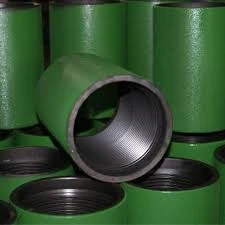- Afrikaans
- Albanian
- Amharic
- Arabic
- Armenian
- Azerbaijani
- Basque
- Belarusian
- Bengali
- Bosnian
- Bulgarian
- Catalan
- Cebuano
- Corsican
- Croatian
- Czech
- Danish
- Dutch
- English
- Esperanto
- Estonian
- Finnish
- French
- Frisian
- Galician
- Georgian
- German
- Greek
- Gujarati
- Haitian Creole
- hausa
- hawaiian
- Hebrew
- Hindi
- Miao
- Hungarian
- Icelandic
- igbo
- Indonesian
- irish
- Italian
- Japanese
- Javanese
- Kannada
- kazakh
- Khmer
- Rwandese
- Korean
- Kurdish
- Kyrgyz
- Lao
- Latin
- Latvian
- Lithuanian
- Luxembourgish
- Macedonian
- Malgashi
- Malay
- Malayalam
- Maltese
- Maori
- Marathi
- Mongolian
- Myanmar
- Nepali
- Norwegian
- Norwegian
- Occitan
- Pashto
- Persian
- Polish
- Portuguese
- Punjabi
- Romanian
- Russian
- Samoan
- Scottish Gaelic
- Serbian
- Sesotho
- Shona
- Sindhi
- Sinhala
- Slovak
- Slovenian
- Somali
- Spanish
- Sundanese
- Swahili
- Swedish
- Tagalog
- Tajik
- Tamil
- Tatar
- Telugu
- Thai
- Turkish
- Turkmen
- Ukrainian
- Urdu
- Uighur
- Uzbek
- Vietnamese
- Welsh
- Bantu
- Yiddish
- Yoruba
- Zulu
crossover sub drilling
Understanding Crossover Sub Drilling Techniques and Applications
Crossover sub drilling has emerged as a crucial component in the field of drilling technology, especially within the oil and gas industry. The term crossover sub refers to a specialized tool used to facilitate the transition between different drill string components, thus optimizing the drilling process. In this article, we will explore the fundamental principles of crossover sub drilling, its applications, benefits, and the innovations shaping its future.
What is Crossover Sub Drilling?
Essentially, a crossover sub is a short section of pipe equipped with various threaded connections, allowing for a seamless transition between different types and sizes of drill pipes and components. Its primary function is to accommodate changes in drilling equipment without having to dismantle the entire string of pipes. This capability is particularly advantageous when switching between various drilling systems, such as from conventional rotary drilling to downhole motor systems.
Crossover subs are engineered to handle the significant mechanical stresses and pressures encountered during drilling operations. They are designed to be robust, enabling them to withstand harsh downhole conditions, including extreme temperatures and corrosive environments.
Applications of Crossover Sub Drilling
Crossover sub drilling finds extensive applications in several areas, primarily in oil and gas exploration and production. Some of the key applications include
1. Wellbore Stability Ensuring the stability of the wellbore during drilling operations is critical. Crossover subs help maintain optimal pressure balance, facilitating better control over wellbore conditions.
2. Directional Drilling In directional drilling scenarios, where the drill needs to be steered to reach specific targets, crossover subs allow operators to switch between different drill bit geometries and sizes effectively.
3. Enhanced Recovery Techniques Crossover subs are instrumental in advanced recovery techniques such as horizontal drilling. This enables better extraction of resources from reservoirs that traditional vertical drilling might not economically access.
Benefits of Crossover Sub Drilling
crossover sub drilling

The utilization of crossover subs offers several significant benefits that enhance overall drilling performance
1. Time Efficiency By allowing quick transitions between different drilling systems or components, crossover subs significantly reduce downtime associated with reconfiguring the drill string. This time-saving aspect is crucial in the competitive oil and gas market.
2. Cost-Effectiveness Minimizing downtime and maximizing drilling efficiency translates into cost savings. The ability to use existing tools without extensive modification also reduces equipment expenditure.
3. Improved Safety Crossover subs contribute to safer drilling operations. By reducing the need for repeated assembly and disassembly of drill string components, they lower the risk of accidents associated with handling heavy equipment.
4. Versatility The versatility of crossover subs allows for compatibility with various drilling programs, including those that require multiple drilling techniques or changes in wellbore angles.
Innovations Shaping the Future of Crossover Sub Drilling
The drilling industry is constantly evolving, and the future of crossover sub drilling is no exception. Innovations such as advanced materials, smart sensors, and enhanced manufacturing technologies are paving the way for more efficient and reliable crossover subs.
1. Advanced Materials The development of stronger, lightweight materials will improve the durability and performance of crossover subs, allowing them to operate effectively under more demanding conditions.
2. Automation and Robotics The integration of automated systems could streamline the process of switching drill components, making operations faster and more precise.
3. Data Analytics With the ongoing digital transformation in the drilling sector, leveraging data analytics to monitor the performance of crossover subs can lead to proactive maintenance and optimized drilling strategies.
Conclusion
Crossover sub drilling is a vital aspect of modern drilling operations, offering significant advantages in flexibility, efficiency, and safety. As the demand for energy continues to grow and exploration ventures into challenging environments, the role of crossover subs will only become more prominent. By embracing innovations and continuously improving techniques, the industry can better meet the challenges ahead, ensuring a sustainable and efficient approach to resource extraction.
-
Tubing Pup Joints: Essential Components for Oil and Gas OperationsNewsJul.10,2025
-
Pup Joints: Essential Components for Reliable Drilling OperationsNewsJul.10,2025
-
Pipe Couplings: Connecting Your World EfficientlyNewsJul.10,2025
-
Mastering Oilfield Operations with Quality Tubing and CasingNewsJul.10,2025
-
High-Quality Casing Couplings for Every NeedNewsJul.10,2025
-
Boost Your Drilling Efficiency with Premium Crossover Tools & Seating NipplesNewsJul.10,2025







